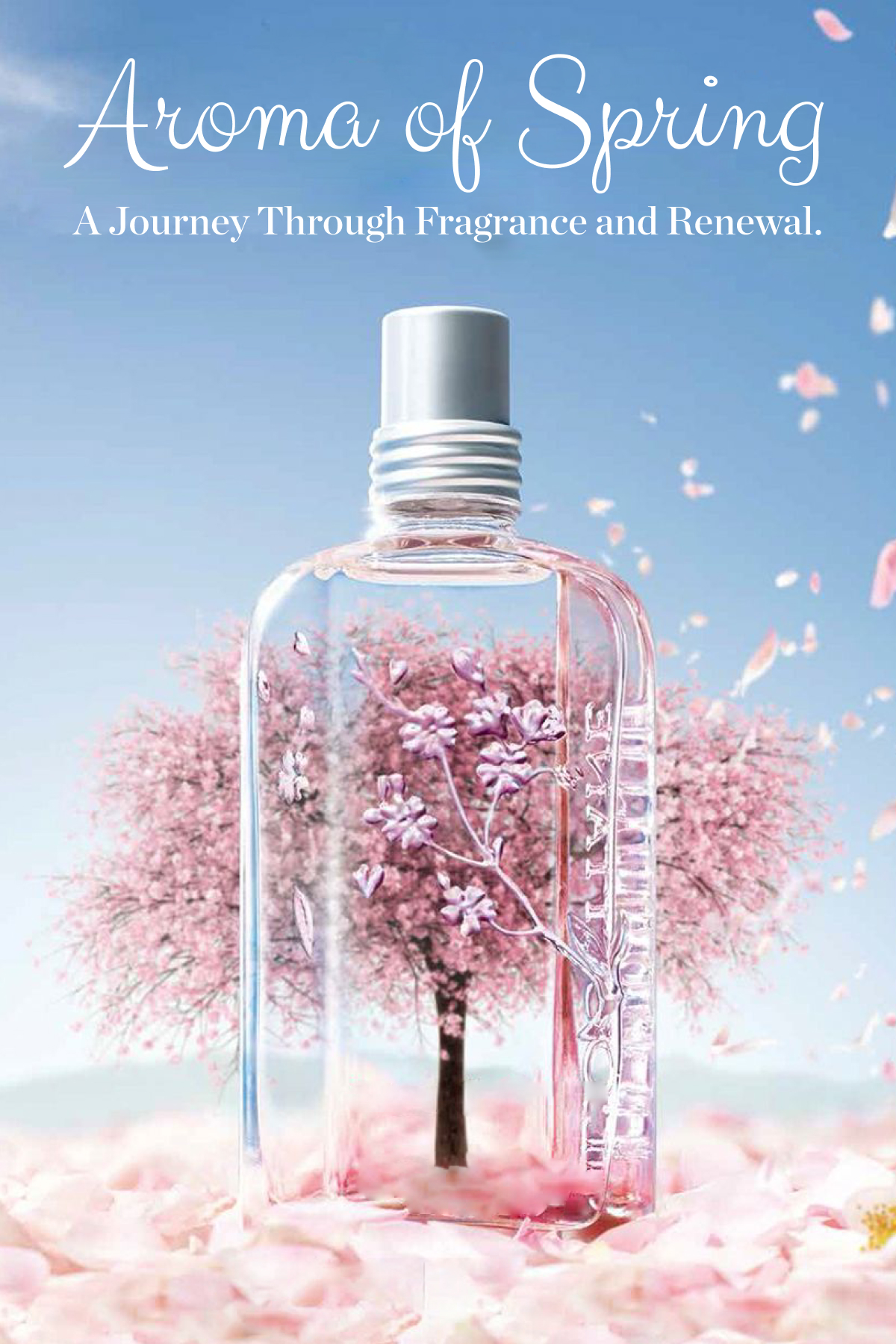Aroma of Spring: A Journey Through Fragrance and Renewal.
Spring, the season of rebirth and regeneration, carries a perfume that is both nostalgic and refreshing. As the globe awakens from its winter hibernation, nature begins to blossom, filling the air with a symphony of smells that are both different and wonderful.
The aroma of spring is more than simply a transient fragrance; it is a complex interplay of natural scents that elicit emotions, memories, and a sense of rebirth. In this blog post, we’ll look at the various aspects of spring’s aroma, from the new blooms to the earthy undertones, and how these scents influence our mood and well-being.
1. The Floral Symphony: Blossoms In Bloom
One of the most distinguishing characteristics of spring is the abundance of flowery smells. As the snow melts and the ground warms, flowers blossom, releasing lovely smells into the air. Among the most recognizable spring flowers are:
Cherry blossoms, known for their delicate, sweet aroma, are associated with spring in many cultures. Their fragrance is light and airy, with notes of almond and vanilla, resulting in a peaceful and uplifting ambiance.
Lilacs: These purple blossoms have a strong, fragrant perfume that is both floral and slightly spicy. The aroma of lilacs is typically associated with nostalgia, recalling recollections of previous springs.
Hyacinths have a strong aroma that is both sweet and slightly musky. Their perfume is complex, with hints of green leaves, honey, and dirt, making them stand out in the spring garden.
Daffodils: Daffodils add a refreshing, almost lemony aroma to the spring landscape. Their perfume is bright and cheery, wonderfully reflecting the spirit of the season.
The mix of these floral notes produces a symphony of fragrances that define the aroma of spring. Each flower adds a distinct tone to the bouquet, creating a complex yet harmonious smell that is definitely springtime.
2. Earthy undertones: The smell of renewal.
The floral top notes of spring conceal a deeper, more grounded fragrance profile. As the earth thaws and life begins to thrive, the soil emits a rich, earthy perfume that complements the sweetness of the blooms above. This aroma, sometimes known as “petrichor,” is the consequence of a chemical reaction in the soil caused by rain falling on dry ground.
Moss and Wet dirt: The perfume of damp moss and wet dirt is an important part of the spring aroma. This perfume is fresh and earthy, with a subtle metallic tinge from the minerals in the soil. It’s a grounding perfume that reminds us of nature’s cycles and the regeneration that spring brings.
Green Leaves: The smell of fresh leaves and grass is another sign of spring. As plants resume photosynthesizing, they emit a fresh, green aroma brimming with life and vitality. This smell is frequently connected with development and new beginnings.
Rain: Spring rains have a particular aroma that combines earth, ozone, and fresh water. This scent, which is typically described as clean and crisp, enriches the overall aroma of spring, adding a refreshing note to the season’s olfactory profile.
These earthy undertones balance out the sweet, flowery top notes, resulting in a well-rounded, multifaceted perfume that is both stimulating and calming.
3. The Emotional Effects of Spring’s Aroma
The perfume of spring has a significant impact on our emotions and well-being. The mix of flowery and earthy aromas can provoke a wide range of emotions, from nostalgia to hopefulness. Here’s how the aroma of spring affects our mood:
Uplifting and Energizing: The fresh, vibrant scents of spring can increase our energy and improve our spirits. The blend of floral and green notes provides a sensation of optimism and rebirth, boosting our mood and motivation.
Nostalgic and comforting: For many people, the aroma of spring evokes memories of childhood, outdoor experiences, and spending time in nature. This nostalgia can bring consolation and a sense of continuity by reminding us of the natural cycles of life and the passing of time.
Calming and grounding: The earthy undertones of spring’s scent help us feel more connected to nature and ourselves. The smell of damp dirt and green leaves can be relaxing, lowering stress and anxiety.
The emotional influence of spring’s aroma demonstrates the power of smell in our life. It serves as a reminder that fragrance is more than simply what we smell; it also affects how we feel.
4. Spring in a Bottle: Capture the Season’s Scent
There are several perfumes and house fragrances that capture the essence of spring and can be worn throughout the year. These scents frequently combine floral, green, and earthy components to provide a scent reminiscent of a spring day.
Many spring scents include notes of jasmine, lily of the valley, and peony, as well as green notes such as galbanum and vetiver. These scents are light and refreshing, ideal for wearing during the warmer months.
House Fragrances: To add the aroma of spring to your house, seek for candles, diffusers, or room sprays with floral and green undertones. Scents such as new linen, wildflowers, and cut grass can help bring the aroma of spring within.
DIY Aromas: If you want a more personal touch, you can make your own spring scent using essential oils. Combine oils like lavender, bergamot, and cedarwood to create a unique blend that embodies the freshness and energy of spring.
Whether through commercial scents or homemade combinations, the aroma of spring can be enjoyed long after the season is over.
5. Conclusion: Enjoying the Aroma of Spring
Spring’s scent celebrates life, renewal, and natural beauty. It’s a complex blend of floral, green, and earthy smells that combine to create a fragrance that’s both energizing and soothing. The aroma of budding flowers and damp dirt reminds us of the natural cycles and the promise of new beginnings.
The perfume of spring, whether experienced in nature or recorded in a bottle, is a sensory experience that enriches and uplifts our emotions. Let the aroma of spring encourage you to renew, rejuvenate, and reconnect with the world around you.














